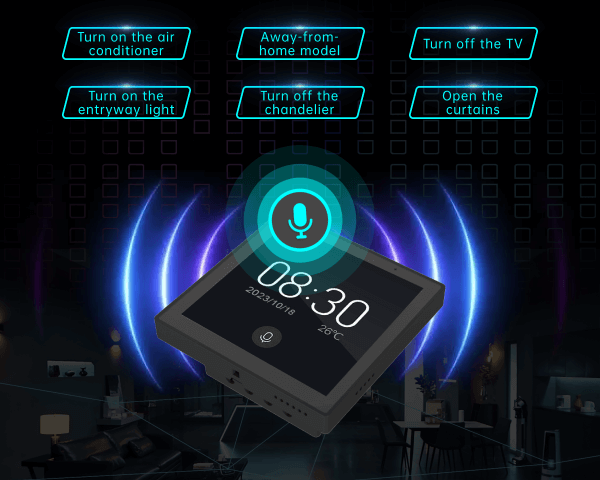Building the IoT-based smart home solution can be complex because you have to integrate the hardware, software, and networking technologies, so it is important to have a starting point.
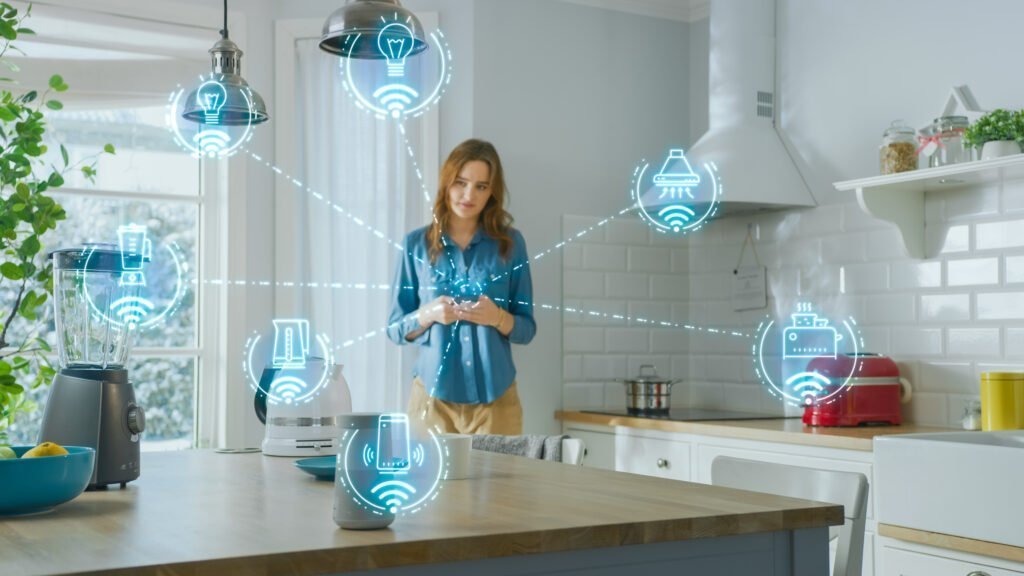
In this article, I will highlight the top five home automation use cases that make a good investment, and IoT components that are involved, the suggested IoT architecture for developing these applications, the potential problems during the implementation, and workable fixes for these problems.
My intention is to help you utilize the right technologies and devices to develop smart home solutions, addressing the concerns and difficulties with our professional help. Let’s get right into it!
Smart Home Market Adoption Over The Years
Smart homes have seen an increased surge in adoption in the US over the past decade; penetration rate was only 28.1% in 2015 but increased to 47.9% in 2023 with close to 64 million users. This number is expected to grow to over 100 million users in 2028, representing close to 80% penetration.
If you narrow it down to the different home automation segments, control and connectivity have consistently held the top position in terms of user interest and projected growth, and is projected yearly growth in future, hitting 115 million users in 2028 (84% penetration).
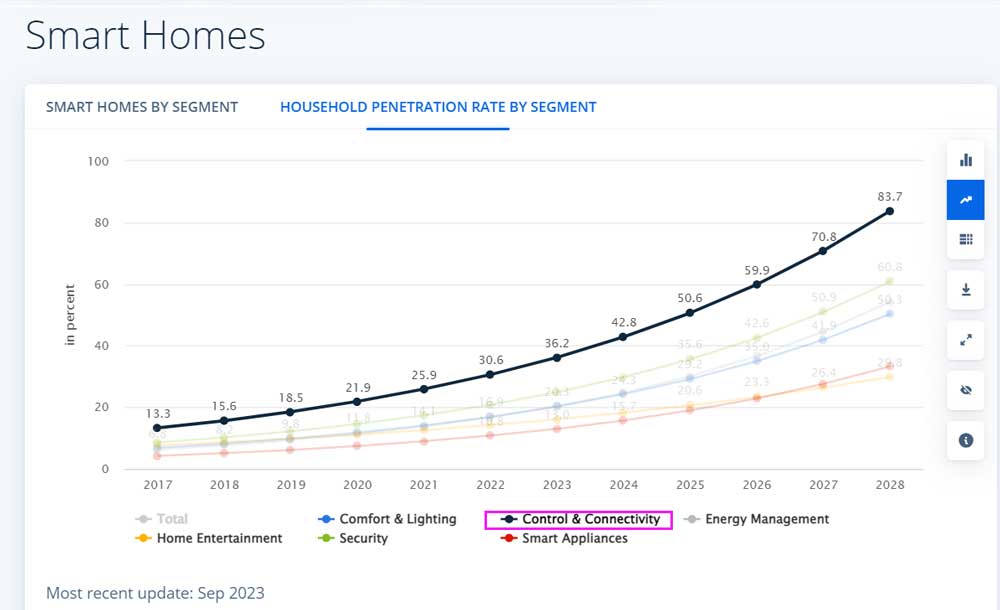
Source: https://www.statista.com/outlook/dmo/smart-home/united-states#smart-homes
Security alarm, energy management, comfort and lighting, smart appliances, and home entertainment follow in that order, all showing signs of increasing penetration to 60.8%, 54.2%, 50.3%, 33.3%, and 29.8%, respectively.
Given these trends, the smart home industry presents a compelling opportunity for investment, particularly considering that the global smart home market is projected to reach a value of $163.7 billion in 2028.
If you want to make the most profit, you can focus on providing smart home control and connectivity solutions because the data indicates this area has the highest demand.
5 Smart Home Use Cases Worth Investing In
Home Security
Home security systems incorporate devices IoT door sensors monitoring the opening and closing actions of houses and apartments, smart home PIR sensors detecting indoor movements when no one is home or at night, activating Zigbee alarm sirens to deter intruders.
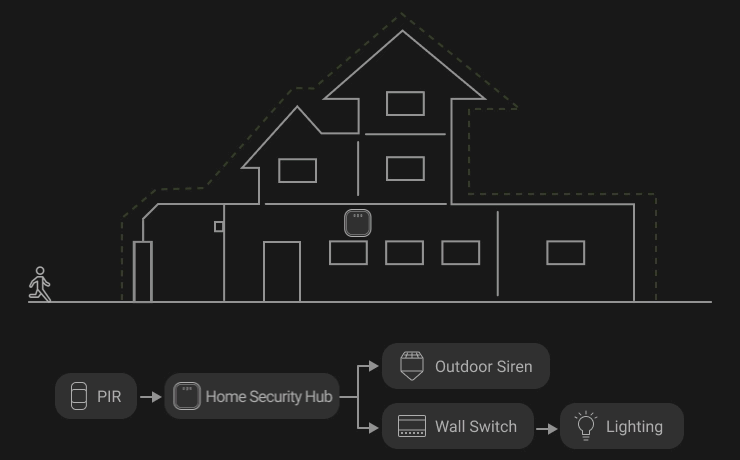
Popular Home Security Devices Include:
- PIR Motion Sensors
- Door Magnetic Sensors
- Alarm Sirens
- Panic Buttons
- Security Cameras
- Control Panel
Wireless Technologies Involved:
- Zigbee
- Z-Wave
- BLE Bluetooth Low Energy
- RBF (a Sub 1GHz protocol)
Why should you invest in home security business?
Due to the growing global concerns regarding household safety and security, home security businesses holds significant potential for profitability. The surge in crime rates has also led to an unprecedented demand for innovative safety and security systems, and there are over 3,500 security companies already operating in the US. Big names in this field including Vivint, Ring, Ajax, etc.
If you are considering starting a home security company or expanding your existing smart home business with the goal of maximizing profitability, it is crucial to have a rapid time-to-market strategy. Dusun IoT’s smart home solution offers assistance by providing fully developed home security kits. This solution gives you the flexibility to select the specific devices you require and transplant your software smoothly. With a streamlined process and rigorously-tested devices, your solution can be released to the market in just a matter of months.
Home Comfort
Home comfort system, also called home comfort HVAC system, controls the climate and air quality of a home or workplace. Home comfort solution usually includes end nodes like IoT temperature and humidity sensors, air quality monitors, which measure the home’s ambient parameters in real time. Users can remotely operate the smart HVAC system based on the smart thermostat via a smartphone app to suit their preference.
You can also use the smart gateway’s edge computing capabilities to automate the temperature monitoring and control system to maintain the preset conditions. This is something worth exploring using the DSGW-210 IoT edge gateway, which should give your customers a better user experience.
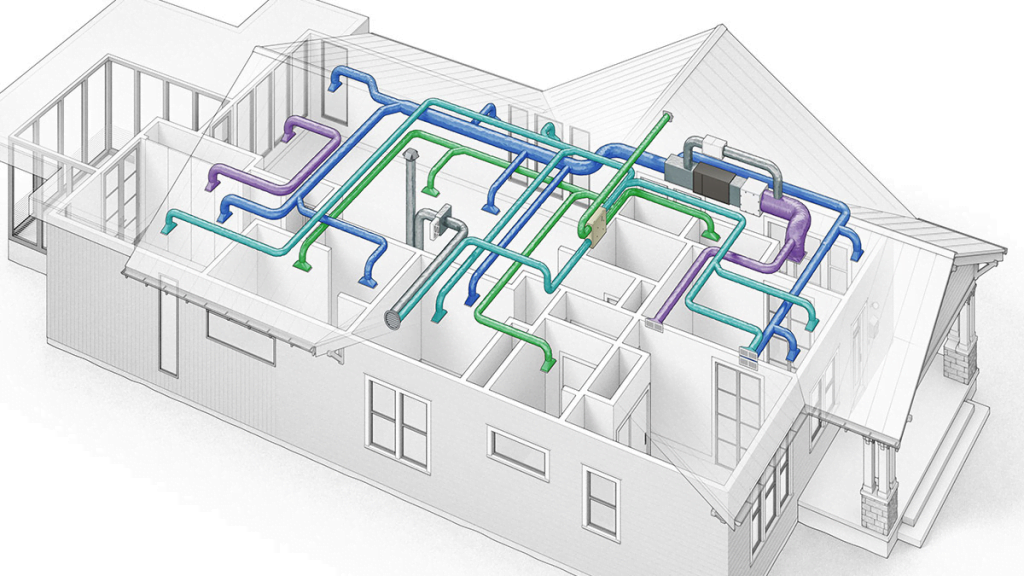
Popular Home Comfort Devices Include:
- Temperature and Humidity Monitors
- Air Quality Monitors
- Smart Thermostats
- Smart Home Gateway hubs
Wireless Technologies Involved:
- Zigbee
- Z-Wave
- BLE Bluetooth Low Energy
- Wi-Fi
- Modbus
- Ethernet
Indoor Safety Monitoring
Accidents can soak or burn a home, and can cause fatalities if severe. Home automation using IoT can help deter these occurrences by using IoT smoke sensors, water leak detectors, and methane (natural gas) detectors to monitor and activate responses when significant levels are detected.
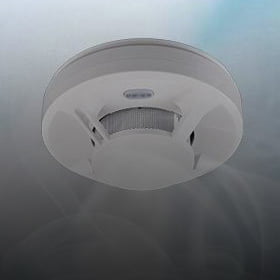
Popular Home Hazard Prevention Devices Include:
- Smoke Detectors
- Water Leak Detectors
- Gas Sensors
- Smart Home Hubs
Wireless Technologies Involved:
- Zigbee
- Z-Wave
- BLE Bluetooth Low Energy
- Wi-Fi
Automated Control
A home automation control system connects appliances, smart switches, and gadgets to a central gateway hub, providing users with convenient ways to control their devices.
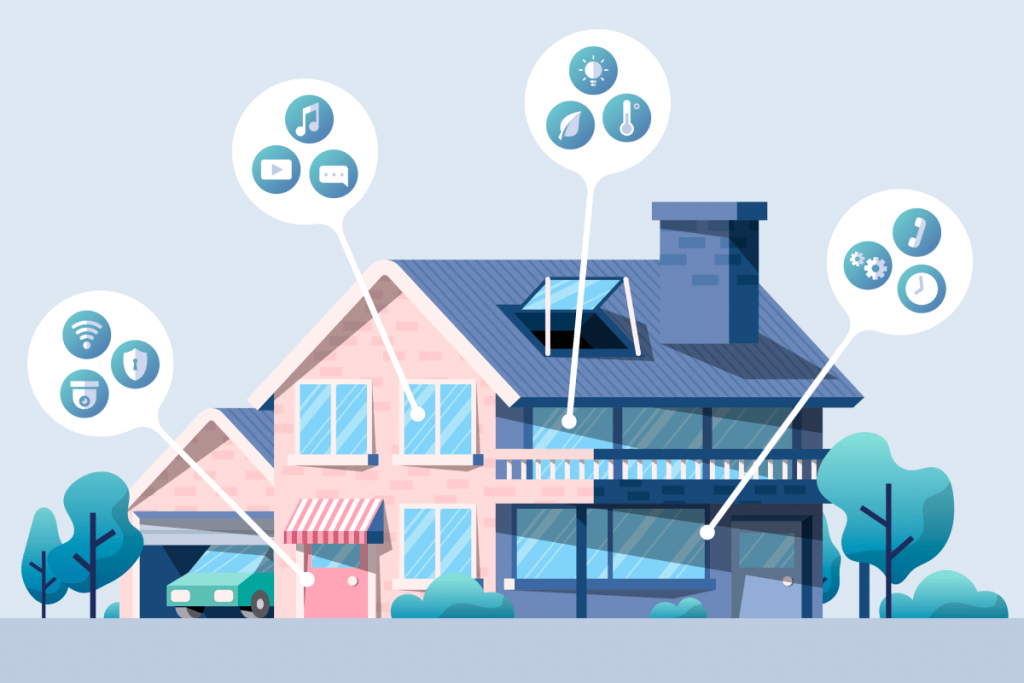
You can automate various tasks such as opening the curtains at your pre-set time, turning off appliances upon receiving smoke leak alerts, and remotely operating the home automation thermostat to work with home fans and AC when the room gets hot.
Home automation using IoT makes your home control more convenient than it has ever been.
Popular Automated Control Devices Include:
- Wall Switches
- Smart Relays
- Smart Curtain Motors
- Smart Home Gateway hubs
Wireless Technologies Involved:
- Zigbee
- Z-Wave
- BLE Bluetooth Low Energy
- Wi-Fi
- Modbus
Energy and Water Management
IoT systems can monitor consumption and track usage overtime, then suggest or take proactive steps to conserve gas and water. For example, you can use a smart water valve as the actuator in this system to shut off the gas or water supply if the sensors along the lines in the house detect leakages.
Dusun IoT is the official hardware partner of Thingsboard, providing Thingsboard IoT gateways and a range of connected smart devices. The IoT gateways act as the central hub, connecting and managing all the devices in the home automation network.
Also Read: How to Choose the Right Thingsboard Gateway?
By integrating our robust hardware with the feature-rich Thingboard platform, we make it possible for you to swiftly build IoT-based home energy monitoring solution.
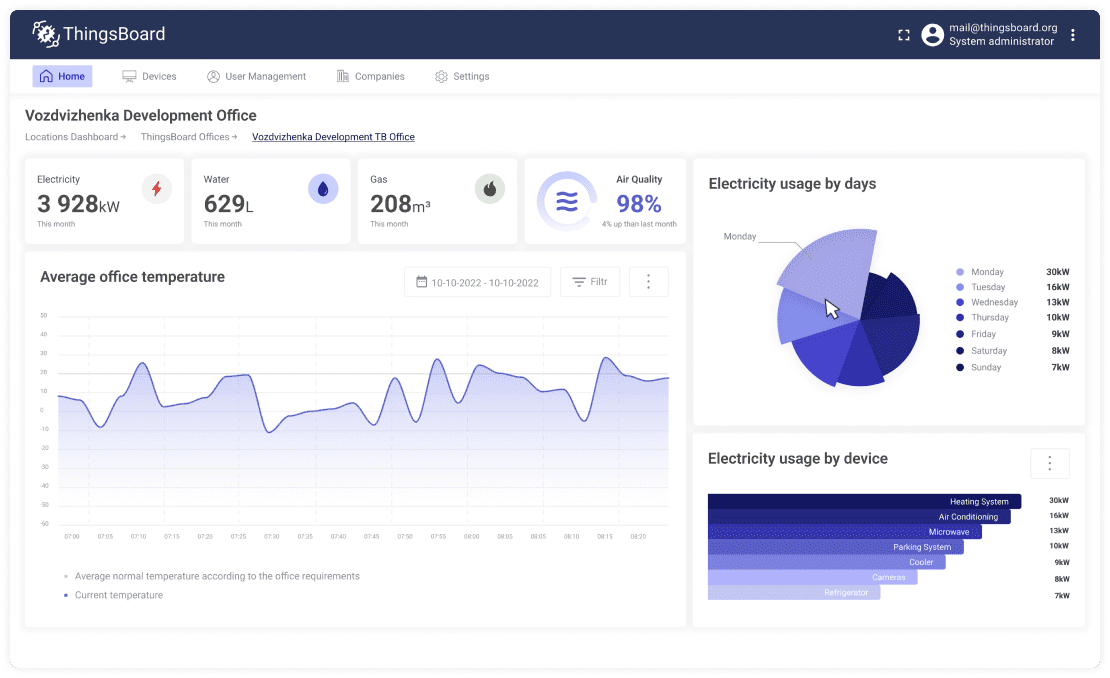
Popular Home Security Devices Include:
- IoT Smart Meters
- Smart Plugs
- Wall Switches
- Energy Management hubs
Wireless Technologies Involved:
- Zigbee
- Z-Wave
- BLE Bluetooth Low Energy
- Wi-Fi
Home Automation IoT Components
Beyond the ones already stated, there are a plethora of other use cases for home automation, each with a distinct value proposition and investment potential. Regardless of the particular use case, the fundamental building blocks of any robust home automation solutions are the hardware, software, and communication protocols.
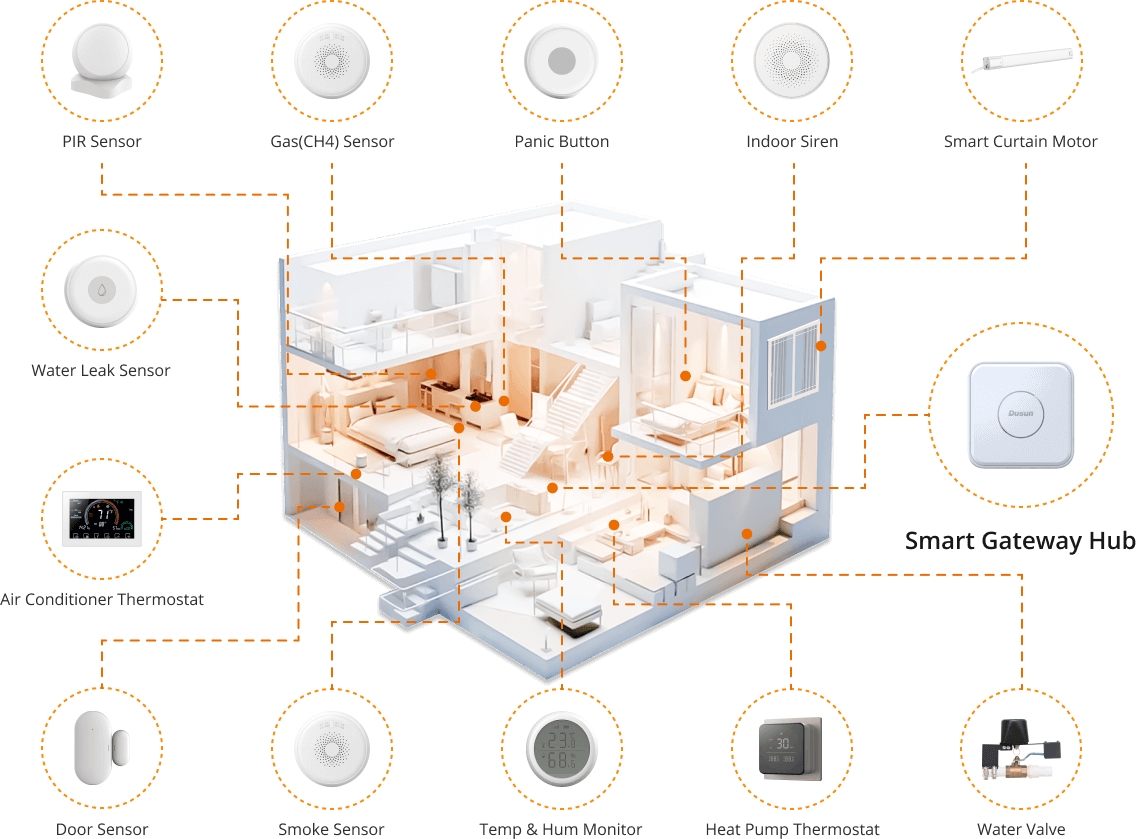
Hardware
The first part of home automation systems is the hardware. It serves as the foundation for turning your smart home ideas into reality. To begin implementing smart home solutions, it is recommended to start with a gateway hub.
This hub acts as a central connection point, facilitating the integration of smart home devices using various protocols and providing convenient management capabilities. Other components depend on the specific automation segment you want to develop.
Also Read: Is It Good to Use Raspberry Pi as Smart Home Hub?
Communication Protocols
The second part are communication protocols, which facilitates effective communication between the components in the device layer. Communication protocols ensure network connectivity and enable the exchange of information, commands, and data between the devices and the central gateway hub.
Also Read: Zigbee in IoT?
Software
The third part is software or applications. They are essential in giving users the ability to efficiently operate and observe their automation systems. These software programs let homeowners easily communicate with their smart devices and adjust automation settings thanks to the user-friendly interfaces.
Dusun IoT leaves you the freedom to develop or transplant your preferred applications on our smart home devices to customize the solution for your customers.
Home Automation IoT Architecture
To delve deeper into the realm of home automation using IoT, we can expand the three components mentioned earlier into a more intricate 5-layer smart home IoT architecture. This comprehensive architecture provides a holistic understanding of the system’s complexities and highlights the key layers that contribute to its functionality.
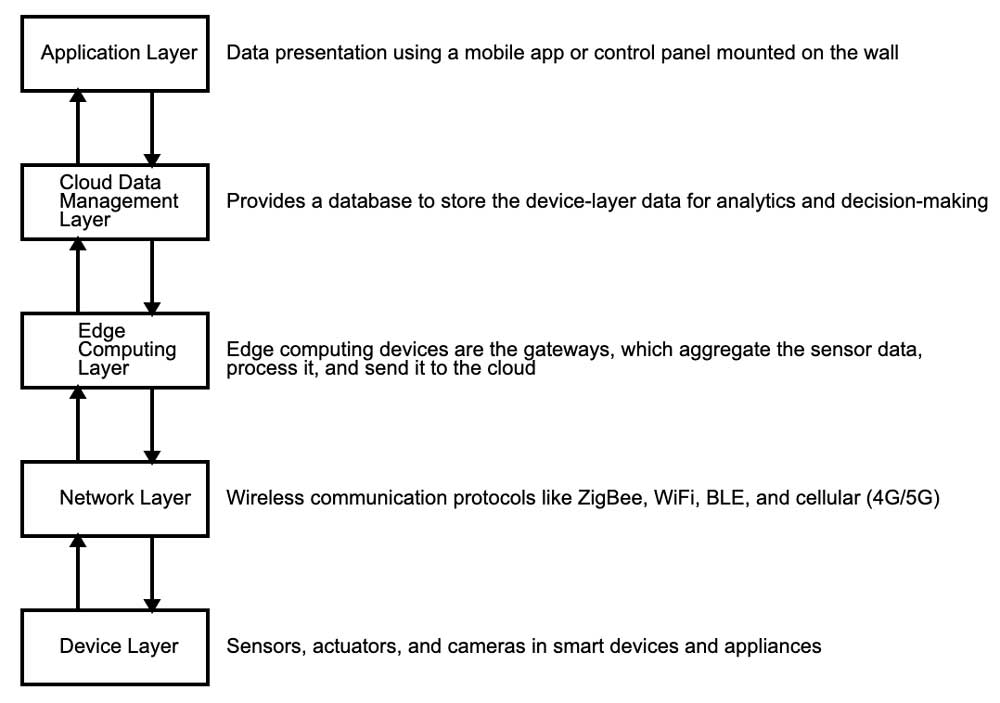
Device Layer
At the bottom of the architecture stack is the device layer, which comprises all the sensors, actuators, and gadgets like thermostats, sirens, and panic buttons.
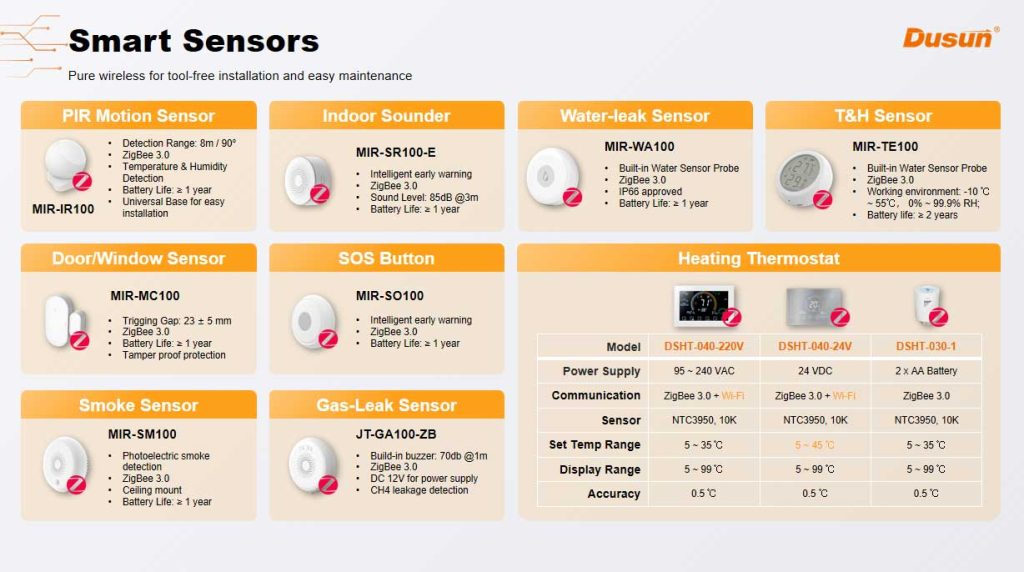
Network Layer
The network layer covers the wireless protocols for IoT that the device layers use to connect to the gateway hub.
Gateways act as routers in this architecture, which means they manage the network, translate the communication protocols to the WAN side, and execute the commands coming from the local server or cloud ends. But instead of relying solely on WiFi, they can create an interconnected, low-powered, and local network using other protocols like BLE, ZigBee, Z-Wave, and Sub 1GHz.
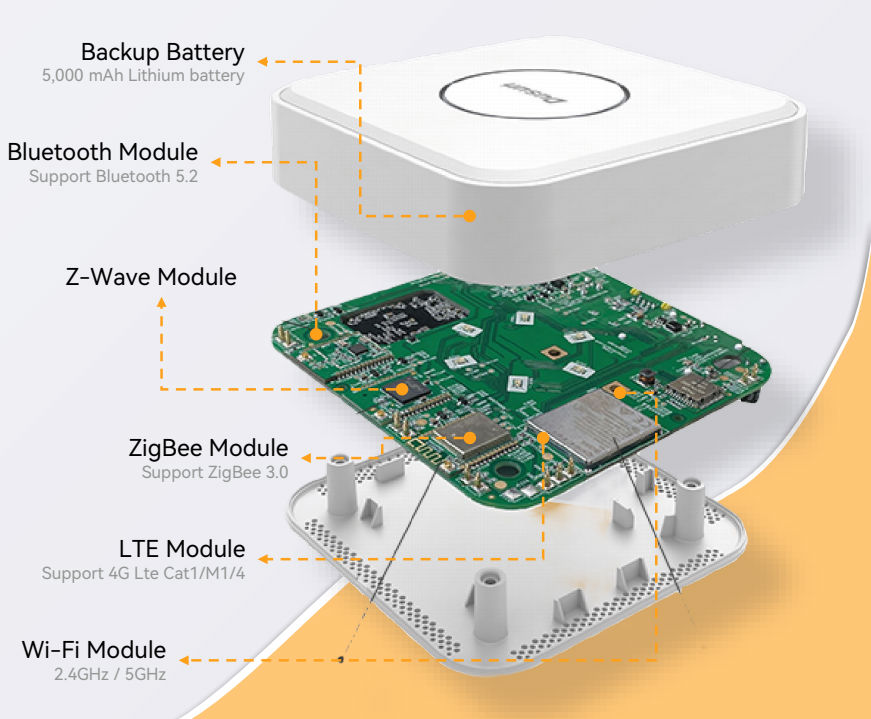
Edge Processing Layer
The edge processing device is the edge gateways, which receives the data from the end nodes, processes it (aggregation, filtering, clustering, and summarizing), then sends data to the cloud for further processing and analytics.
This edge device can also handle automated tasks and it receives commands from the cloud (through the application) to push the user instructions to actuators and smart devices in the house.
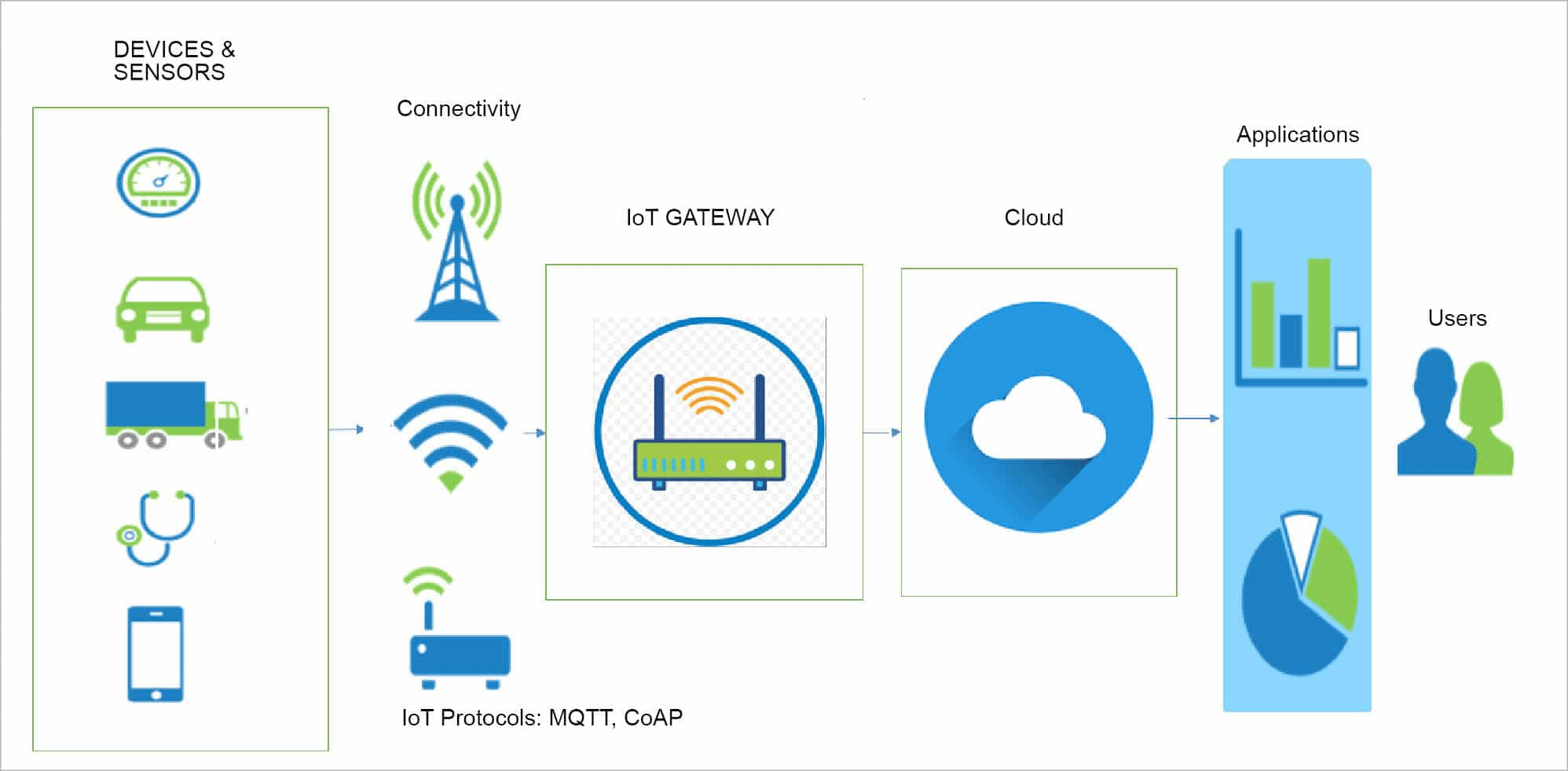
Lastly, this edge computing layer makes the IoT home automation system more reliable because it only sends the essential data to the cloud. The most vulnerable part of the network is on the internet connection, which occurs from the gateway to the cloud. Limiting the data going out makes the setup more secure.
Cloud Data Management Layer
IoT systems require cloud storage to keep the data that drives the analytics process. This cloud data enables the homeowners to access the home automation systems from anywhere for decision making via the mobile app.
Application Layer
Mobile device applications enable homeowners to access the cloud to analyze the processed sensor data and make decisions. These applications can also give insights in areas like energy and water consumption for better management.
Challenges and Solutions for IoT-based Home Automation Solutions
Device Connectivity and Interoperability
The devices must be able to interconnect with the gateway hub to form the local network, but this is impossible if they run on different protocols. ZigBee and BLE are popular for smart home devices, with the latter having an advantage of connecting to the user’s mobile device.
Matter and Z-Wave can also work. The former provides high-grade interoperability and can penetrate walls better than ZigBee in multi storey homes. Matter is still relatively new so it might be challenging to find devices to connect to the gateway hub using this protocol to create the automated home.
Integration Complexity
Integrating smart home end devices and gateway hubs from different manufacturers can be a challenging task. The process often involves extensive time spent on selecting compatible devices, testing their functionality, troubleshooting potential issues, and ensuring seamless integration with third-party cloud platforms if applicable.
It becomes even more complicated if a device supplier changes the features of their products or discontinues manufacturing them, which calls for reselection and retesting of compatible devices. This can be a time-consuming and costly endeavor.
The intricacies required in implementing smart home technologies might also leave you feeling bewildered and overburdened. The most frequently asked questions includs:
- How to connect Zigbee devices to the gateway?
- How many Zigbee devices can a gateway handle?
- If a Zigbee 3.0 gateway can connect with all Zigbee devices?
- How to send Zigbee device data to the cloud via MQTT?
- … …
One way to deal with these issues is to look for vertically integrated product lineup that eliminate these hurdles. What does this mean? It means finding smart device manufacturers that have already integrated their smart devices with compatible gateway hubs, categorizing them based on different use cases, as mentioned in the previous part.
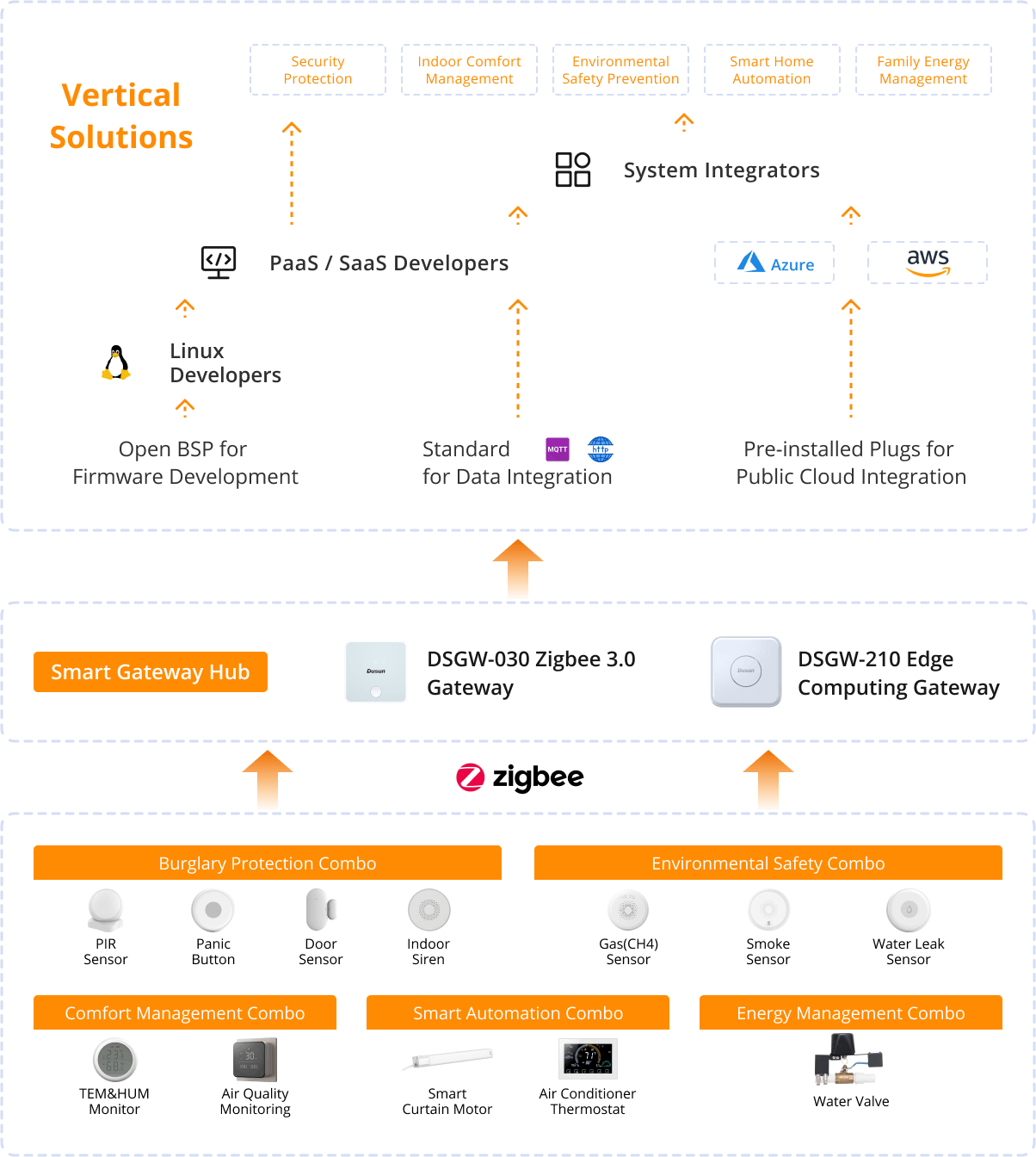
This approach allows you to focus solely on integrating the gateway hubs with your chosen or third-party platforms, significantly reducing the complexities associated with device compatibility and integration. You can save time, cut costs, and expedite the deployment process by choosing such a vertically-integrated product selection.
Data Security and Privacy
As smart homes become more sophisticated, they send more personal data to the internet, increasing the chances of cyber attacks.
The solution is to focus on data encryption from the lowest level, which is the device layer. These components connect to the gateway hub wirelessly, so whether you rely on ZigBee, BLE, or Z-Wave, ensure you implement strong encryption to tamper-proof the local network.
The gateway hubs should also have better edge processing capabilities and AI to increase automation and reduce data transmission to the cloud, which is the weakest link in the IoT system.
Device Maintenance
Some wireless gateways and end devices have built-in batteries to provide backup if the power supply goes off. You should look for products with low power communication protocols like BLE and ZigBee to limit the depth of discharge, which lengthens the battery life. This, in turn, will minimize maintenance over time.
Also, consider applying robust maintenance strategies like bulk OTA updates with the capability of bulk rollback if issues come up afterward.
Future Trends of Home Automation Using IoT
Artificial Intelligence (AI)
The widespread adoption of AI has become a prominent trend, particularly since OpenAI made a significant impact in the world last year. The smart home industry is no exception to this trend, as AI is transforming it in various ways.
With AI, smart homes are becoming more automated to have a higher level of intuitiveness and responsiveness. For instance, a smart AI-powered energy management system can provide insights into a customer’s water consumption and adjust usage accordingly or suggest ways to reduce consumption.
DSGW-290 Smart Home AI Controller
IoT Edge Computing
Edge computing occurs in both gateway hub and connected devices, bringing data processing and storage closer to the device layer.
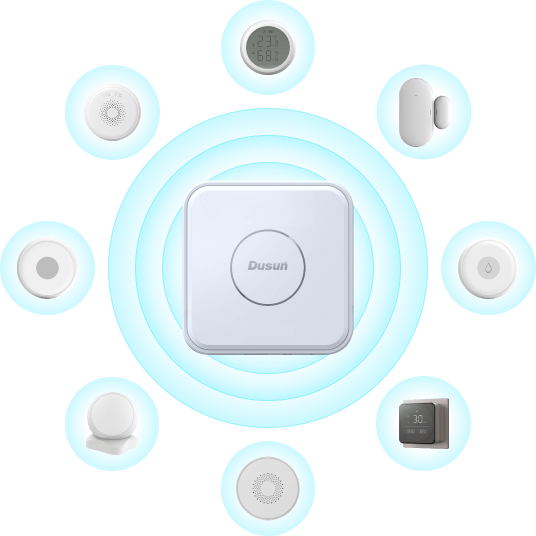
Edge gateways also provide localized data storage, which further reduces reliance on the cloud and cuts the cloud storage space fees because you won’t need as much.
These edge devices have become popular over time because the edge data processing capability enables process automation in the home, which reduces reliance on the cloud and slashes the required network bandwidth.
Online/Offline Voice Control
Natural language commands enhance the user experience and give the homeowner more flexibility to interact with the system hands-free.
Consider integrating a BLE-based voice control module to the end devices, such as kitchen appliances and thermostats, to enable the users to control the devices or adjust the temperature orally.
There are two types of voice control technologies to pick from: online and offline.
- Online voice control requires on a continuous internet connection to process voice commands. This allows the system to leverage cloud-based voice recognition services and advanced natural language processing algorithms. Online voice control offers the benefit of extensive language support, continuous updates, and the ability to leverage cloud resources for complex voice processing tasks.
- Offline voice control operates locally on the device or within the smart home network. Because voice commands are processed locally, this has benefits including lower latency and more privacy.
Final Words
Building a smart home solution is an interesting project as showed in this article. However, when you are developing your own smart home solutions, you should place keen attention on product quality and integration to minimize the time to market. Never let unnecessary things delay your product launch.
We focus on building vertically integrated home automation IoT products that communicate via ZigBee, which is the ideal communication protocol for smart home environments.
- If you already have public cloud platforms in place, we offer gateway hubs with pre-installed plugs for quick and smooth integration.
- For PaaS or SaaS developers, we provide standard MQTT and HTTP APIs for facilitating rapid data integration.
- If you are a Linux developer, we provide open BSP for firmware development.This will enable you to develop or migrate your Linux software with ease and you’ll be ready to launch.
That marks the end of this article, and I hope you’ve found it insightful. If you would like to order our products or inquire more information, please send us your inquiries, and we will get back to you right away. Regards and cheers!










